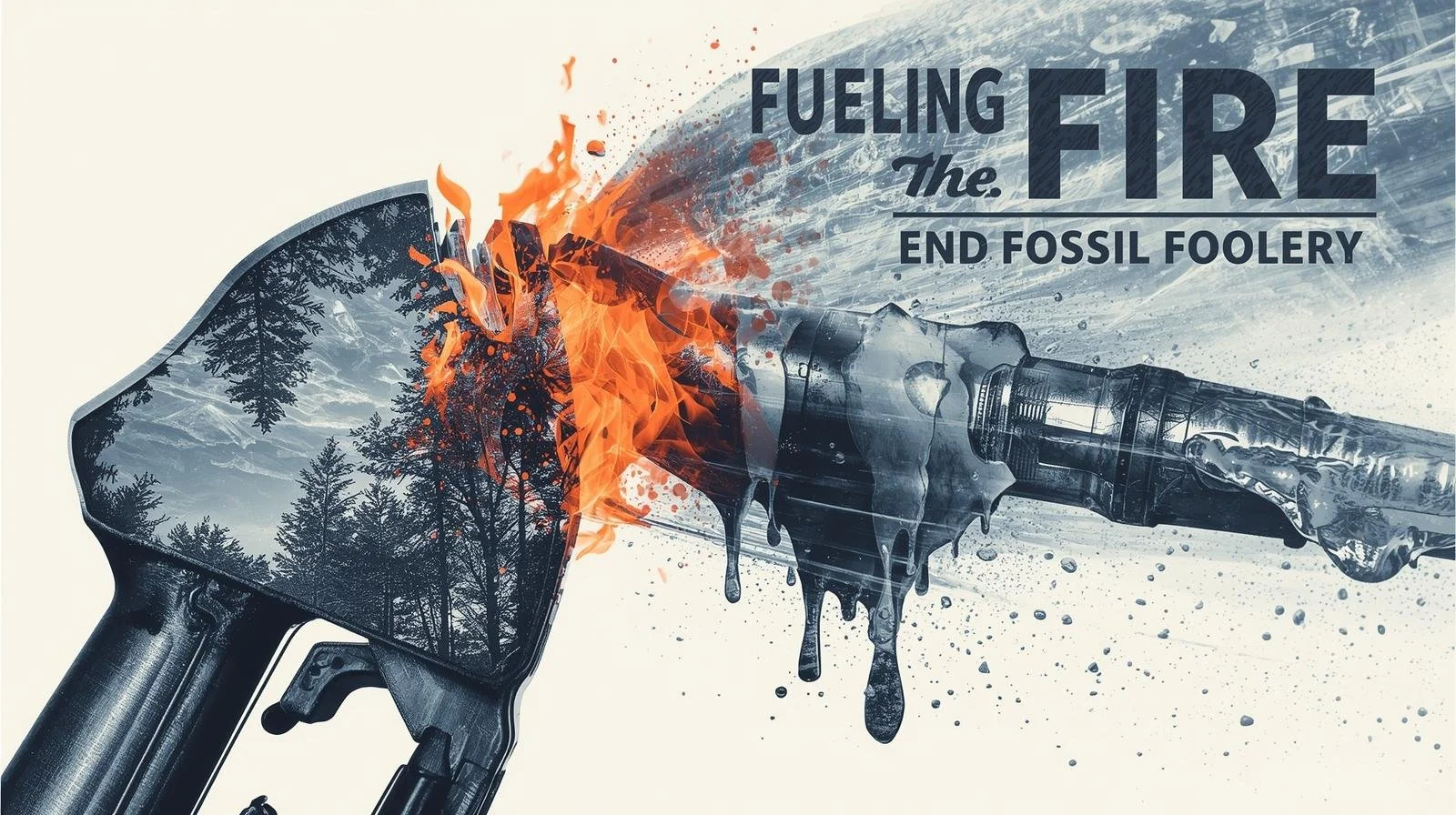Fueling the Fire: An Urgent Call to End Fossil Foolery
The past few years have been a master class in how to weaponize policy against clean energy while acting like it’s patriotic. If you thought freezing fuel‑economy standards in 2019 was just a boring regulatory tweak, think again. It was the opening salvo in a full‑scale assault on anything that doesn’t run on crude oil or corporate gaslighting. Buckle up: what follows is not a drill—it’s an urgent call to arms.
The Freeze Heard Round the World
In one of the most cynical moves in recent memory, the Trump administration proposed freezing fuel‑economy standards at 2020 levels and stripping California of its right to enforce stricter emissions (factcheck.org). That’s right: as the world moved to electric, Washington decided that 36 mpg was good enough forever. Analysts warned that this would lock in billions of extra gallons of gasoline consumption and stall efficiency improvements (rhg.com). Translation: more smog, more oil profits, and a giant middle finger to states trying to clean up their air. This wasn’t about consumer choice; it was about keeping the pumps flowing.
The “One Big Beautiful Bill” That Isn’t
Then came the Orwellian‑named One Big Beautiful Bill Act (OBBBA). Congress’s July 2025 love letter to Big Oil slashed the very tax credits that sparked America’s solar, wind and EV boom. The Council on Foreign Relations soberly noted that the bill “pulls back billions of dollars in funding for climate and clean energy investments” (cfr.org). Columbia’s energy policy experts pointed out that while the OBBBA guts incentives for solar, wind and EVs, it happily preserves subsidies for fossil fuels—including carbon‑capture credits for enhanced oil recovery (energypolicy.columbia.edu). If that weren’t twisted enough, the bill introduced “foreign entity of concern” rules that effectively ban Chinese solar panels and batteries. For those keeping score: domestic oil subsidies? ✔. Affordable solar panels? ✖.
Emergency Powers: Because Fossil Fuel Crisis!
Not content with legislative mischief, the administration declared a national “energy emergency” on January 20 2025. The order claimed that America’s energy supply and grid were dangerously inadequate and that high prices were a national‑security threat. Agencies were instructed to use emergency authorities: eminent domain, the Defense Production Act, to turbo‑charge leasing, drilling and refining. Notice which industries were excluded from this emergency? Wind and solar. Nothing like a crisis to fast‑track pipelines while pretending rooftop panels are a national threat.
Energy Dominance… for Fossils
Barely a month later, the White House created a National Energy Dominance Council. Its mission: make America “energy dominant” by exploiting every “reliable and affordable” resource. The list reads like a petrochemical wish list: crude oil, natural gas, refined petroleum products, uranium, coal (whitehouse.gov), but somehow omits wind and solar. The council was instructed to cut red tape, increase drilling and “eliminate unnecessary regulations” (whitehouse.gov). You’d almost think deregulation and fossil fuel promotion were the end goal.
Killing Green Subsidies
On July 7 2025, the administration took its sledgehammer to what little support remained. An executive order decried “market‑distorting subsidies” for renewables and painted wind and solar as unreliable and unpatriotic (whitehouse.gov). It directed the Treasury to terminate clean‑electricity production and investment tax credits under sections 45Y and 48E of the tax code (whitehouse.gov). The Interior Department was told to root out any preferential treatment for renewables (whitehouse.gov). With one pen stroke, decades of progress were reduced to a footnote.
Death by a Thousand Reviews
The Department of the Interior happily obliged. On July 17 it required every wind and solar project to undergo “elevated review” by Secretary Doug Burgum. Twelve days later, Burgum declared an end to “preferential treatment” for renewables and rescinded every designated Wind Energy Area along the coast. By August 1, the agency began judging projects on “capacity density”—how much power per acre they produce. In case that metric isn’t obvious: large wind turbines and sprawling solar farms produce less power per acre than, say, a gas plant. As if on cue, the Lava Ridge Wind Project was canceled, and developers were told to report eagle deaths. Meanwhile, offshore oil and gas leases marched on.
Freezing Offshore Wind and Halting Grants
The emergency powers continued. A February order suspended all offshore wind leasing and paused permits for onshore projects. According to the policy tracker at Transect, every offshore wind area on the Outer Continental Shelf was withdrawn, existing permits were suspended or canceled (transect.com), and later that year the U.S. Department of Agriculture froze grants and loans under the Rural Energy for America Program (REAP) while banning solar panels from “foreign adversaries” (transect.com). Say goodbye to farmer‑owned solar arrays—national security can’t handle that.
Changing the Rules Mid‑Stream
Not satisfied with killing subsidies, the administration moved the goalposts for those that remain. Reuters reported that the Treasury now requires developers to start “physical work” by July 2027 to qualify for the 30 % tax credit—five years earlier than beforereuters.com. Safe‑harbor provisions that once let projects claim credits after spending 5 % of their costs were guttedreuters.com. Energy consultants warned that about 60 gigawatts of planned solar capacity (enough to power 10 million homes), could be wiped off the mapreuters.com. And tax experts at Norton Rose Fulbright pointed out that the clear 5 % rule was replaced with a nebulous “physical work” standard; projects starting after September 2 2025 must finish within four years, and those starting after July 4 2026 must be done by 2027projectfinance.law. If you’re building a wind farm, better hope you’re the Flash.
Silencing the Public
The icing on the petro‑cake: democratic oversight was shoved aside. An analysis in Stanford Social Innovation Review notes that these sweeping changes are being implemented with “zero input from the public.” The administration declared a “sham energy emergency” to bypass environmental laws and public engagement (ssir.org). NEPA reviews can now be completed in just 28 days, and developers can literally pay to speed up the process (ssir.org). Meanwhile, the EPA’s research arm was dismantled and climate and environmental justice data were scrubbed from its website (ssir.org). If this sounds like a democracy on vacation, you’re not wrong.
The Clock Is Ticking
History has taught us that entrenched interests aren’t invincible. Industrial hemp was banned to protect petrochemicals, yet hemp is making a comeback. Streetcars were demolished to sell more oil and tires, but today cities are reviving rail. Even the petrodollar system faces cracks as nations diversify. The question is whether we sit back and let a handful of policymakers lock in another century of fossil dependency, or we fight back—through state policies, local action and plain old public outrage.
Here’s the blunt truth: if we don’t stop this fossil foolery now, the only thing “dominating” our energy future will be black gold and brown air. It’s time to channel that urgency into action—support state‑level clean‑energy standards, vote out officials who sell our future for barrels of crude, and invest in the technologies that actually deserve the term “reliable and affordable.” We’ve frozen fuel‑economy progress long enough. Now’s the moment to melt that ice and let a clean‑energy spring begin.
From Fossil Fools to Evolution: A Vision for a Hemp‑and‑Bamboo Future
Calling out the fossil fuel cabal is cathartic, but action requires an alternative. That’s where Evolution Mine comes in. At its core, Evolution Mine proposes a radical shift: replace our petro‑addiction with a regenerative economy built on two humble crops—hemp and bamboo. These aren’t buzzwords; they’re botanical powerhouses with numbers to back them up.
Bamboo grows like it’s on fast‑forward. The fastest plant on earth can shoot up an astonishing 36 inches in a single day and reaches maturity in just two to three years. It sequesters carbon and produces about 35 % more oxygen than an equivalent stand of trees. It’s valued worldwide for its strength, flexibility and durability, showing up in flooring, roofing and scaffolding.
Hemp is a productivity beast. It reaches harvest in three to four months and uses roughly 20 % less water than cotton. One acre of hemp can produce up to four times more paper than an acre of trees. Its fibres end up in textiles, bioplastics and building materials, and industrial hemp contains less than 0.3 % THC—so there’s no high, just high performance.
By shifting our consumption to hemp and bamboo products, we can shorten supply chains, sequester carbon, and build economic resilience at the local level. These crops don’t just replace oil—they replace the extractive mindset that brought us here. Evolution Mine is the blueprint for a post‑petroleum world. It’s not utopian; it’s logistics. We’re doing the math and the machining.
So let’s end on a different note: after reading about the fire, join the evolution. Because the last thing this planet needs is another century of oil.
Read the full story in the book.
Evolution Mine: The Industrial Evolution—the blueprint for breaking the petrochemical playbook and building a regenerative economy.
👉 Buy on Amazon



